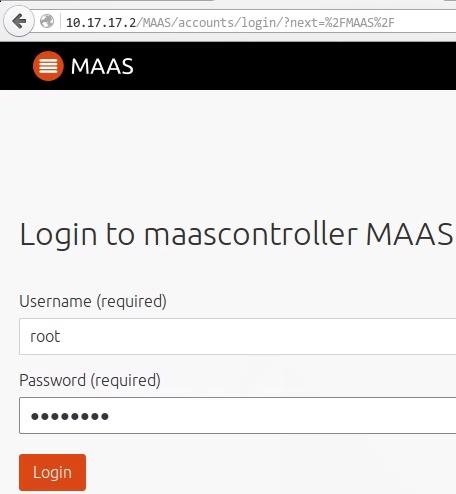Tips On Maas 2.0
May 12, 2016
Technology
Installation
Based on Ubuntu16.04, install maas via:
$ sudo apt-get install -y maas
After installation, create the default username/password via following command:
$ sudo maas-region createadmin --username=root --email=xxyy@xxyy.com
Password:
Again:
Now you could login to the http://YourIP/MAAS via:

Using API to talk
In maas cli, using following steps for generate the API key and use:
# sudo maas-region apikey --username=root
AYnuZY3gWTnpxJb7Kp:AtDG3yUmaDu8tXGzTc:tumR29xsRGL6A7T6M2G7LTETPP5kkDwC
# maas login mymaas http://10.17.17.2/MAAS/api/2.0
AYnuZY3gWTnpxJb7Kp:AtDG3yUmaDu8tXGzTc:tumR29xsRGL6A7T6M2G7LTETPP5kkDwC
You are now logged in to the MAAS server at
http://10.17.17.2/MAAS/api/2.0/ with the profile name 'mymaas'.
For help with the available commands, try:
maas mymaas --help
Later we will use mymaas for talk to MAAS Controller.
Add Boot Source
Click Images, you won’t see anything because the images are not downloaded. you could
download it manually via following command:
$ sudo apt-get install simplestreams ubuntu-cloudimage-keyring apache2
$ sudo sstream-mirror --keyring=/usr/share/keyrings/ubuntu-cloudimage-keyring.gpg \
https://images.maas.io/ephemeral-v2/daily/ /var/www/html/maas/images/ephemeral-v2/daily \
'arch=amd64' 'subarch~(generic|hwe-t)' 'release~(trusty|precise|xenial)' --max=1
After downloading, the image content will be available under /var/www/html/.
Or, if you downloaded the html files before, do following steps for using your pre-downloaded packages:
$ tar xJvf html.tar.bz2 -C /var/www/html/
$ sudo maas mymaas boot-sources create url=http://10.17.17.2/mirror/images/ephemeral-v2/releases/ keyring_filename=/usr/share/keyrings/ubuntu-cloudimage-keyring.gpg
Now there are two boot-sources in maas, delete the default one(Because we are in china, and its goddamned GFW!)
dash@maascontroller:~$ sudo maas mymaas boot-source delete 1
Success.
Machine-readable output follows:
dash@maascontroller:~$ sudo maas mymaas boot-sources read
Success.
Machine-readable output follows:
[
{
"keyring_data": "<memory at 0x7f4e9478b288>",
"resource_uri": "/MAAS/api/2.0/boot-sources/2/",
"id": 2,
"url": "http://10.17.17.2/mirror/images/ephemeral-v2/releases/",
"keyring_filename": "/usr/share/keyrings/ubuntu-cloudimage-keyring.gpg"
}
$
Import boot-sources via:
$ sudo maas mymaas boot-resources import
It will takes a little bit time for importing the boot images.
For adding nodes:
